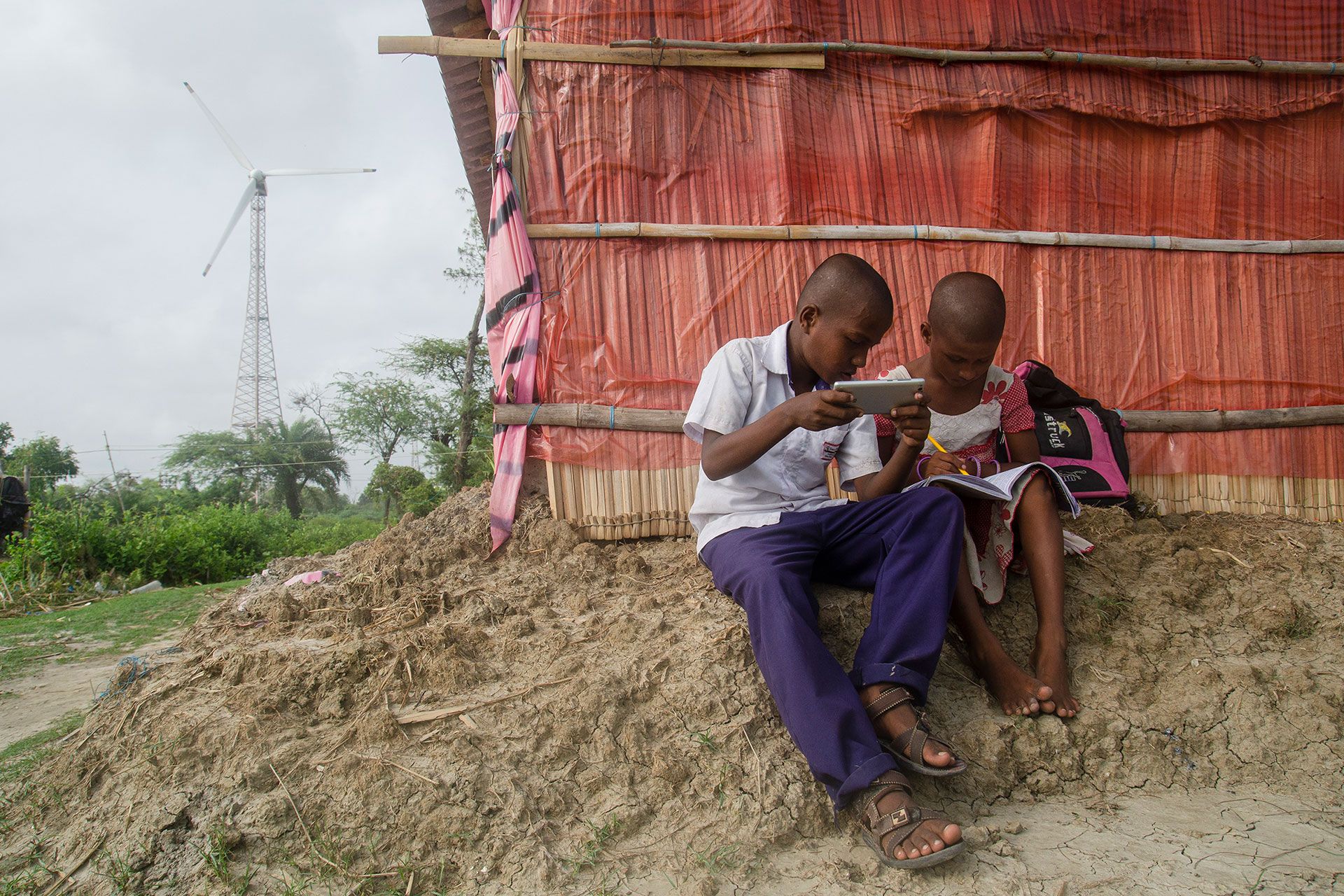
Digital tech to the rescue at a pivotal moment for the world
By Tomas Lamanauskas, Deputy Secretary-General, ITU
With global temperatures set to surge to record levels in the next five years, the world looks likely to breach the 1.5o threshold – the tipping point for catastrophic climate consequences – by 2027. Cyber failure and economic turmoil are other top risks facing us in the next 10 years.
As we emerge into the post-pandemic world, technology is evolving more rapidly than ever. As statistics from the International Telecommunication Union (ITU) show, the COVID “bump” sped up the pace of tech adoption even before platforms like ChatGPT began their meteoric ascent.
Amid calls for caution, the need is ever more urgent to leverage these technologies for good.
The United Nations Sustainable Development Goals (SDGs) give us the key framework. As UN Secretary-General António Guterres said recently: “no country can afford to see them fail.”
Yet at the mid-point of the 2030 Sustainable Development Agenda, just 12 per cent of SDG targets are on track.
Digital divides persist, with 2.7 billion people still offline worldwide and a glaring digital gender gap, especially in the least developed countries. Artificial intelligence (AI) divides are growing fast, as most countries lack the infrastructure, computer capacity or human resources and expertise to make the most of these new tools.
Time is of the essence. Countries and communities need to seize the momentum to accelerate sustainable digital transformation for all.
A digital rescue for the SDGs
There is no single, simple fix to bring the digital world to everyone through universal connectivity. Even with mobile broadband covering 95 per cent of the world’s population, many people struggle to stay online – or choose not to, because the Internet is not affordable, meaningful, or trustworthy enough.
Tackling this “meaningful connectivity” gap means bridging five other divides: income, urban-rural, generational, educational, and gender.
The first element is connectivity infrastructure. Recent estimates by ITU and the International Monetary Fund put investment needs for digital connectivity at about USD 400 billion.Getting broadband to everyone across Africa alone by 2030 would cost close to USD 110 billion, according to a UN Broadband Commission working group.
The next challenge is affordability. Although 2022 saw information and communication technology (ICT) services become more affordable globally, they remain unaffordable for poorest 40 per cent of people in many parts of the world – and not just low-income countries.
And then come skills, confidence, and meaningful content. People need digital training, along with devices, local-language content, and a sense of security to thrive in the digital world.
Where does ITU come in?
ITU – the UN agency for digital technologies – is actively brokering innovative partnerships for connectivity.
Giga – ITU’s joint initiative with UNICEF to connect every school to the Internet – has made incredible progress, mapping 2.2 million schools in 138 countries and connecting over 5,700 schools in 20 countries to date. By year-end, Giga aims to map 2.5 million schools, support 40 countries through connectivity initiatives, and get 20,000 more schools online.
The ITU-led Partner2Connect Digital Coalition mobilizes resources, commitments, and partnerships to foster meaningful connectivity and digital transformation globally, including in the hardest-to-connect communities. To date, over 620 pledges from over 280 entities worldwide represent over USD 30 billion in value.
Now, as the ITU Secretary-General announced a couple of weeks ago, we are targeting USD 100 billion by 2026.
In parallel, ITU supports the green transition through standards for energy efficiency, climate change adaptation and mitigation, e-waste, and circular economies, as well as overall environmental management. Tech companies, network operators, data centres, and manufacturers are using ITU green standards to reduce emissions in line with science-based targets.
Through platforms like the World Summit on the Information Society (WSIS) Forum, we have been supporting an active multi-stakeholder community in advancing benefits of digital tech in education, health, financial inclusion, climate change, accessibility, and other lines of action to advance SDGs.
Now, as we close the second decade since the original World Summit and enter the WSIS+20 stage, we are working with others to review the achievements of the past 20 years and making sure global digital cooperation meets the needs of the today’s world.
Building on this, ITU is contributing to the proposed Global Digital Compact, seeking to catalyse digital action for good on the way to the Summit of the Future next year.
SDG Digital Day, taking place on 17 September before the SDG Summit, will be a key moment to join forces on digital solutions. We are also gearing up to the next climate conference, COP28, working with partners to make sure we maximise the power of digital technology to help our planet.
High stakes
Amidst the backdrop of the climate crisis, conflict, and a volatile economy, we have just a few years to harness the full power of tech, deliver on the SDGs, and prevent the loss of our planet.
In tense times, everyone needs to be around the table. The spirit of multilateral cooperation and partnerships is key.
Challenges affect everyone, and everyone’s perspectives must be included. No matter how big or small, no matter their power, no matter their level of development, everyone can exercise their voice and be part of the action.
We need to act together to harness the full potential of digital and build an equitable, prosperous, peaceful, inclusive, and sustainable future for everyone, everywhere.
Based on remarks by Tomas Lamanauskas on 25 May to ICT Ministers of Non-Aligned Movement Countries on developing ICT infrastructure to implement the UN Sustainable Development Goals.
Header image credit: ITU/Sudip Maiti
